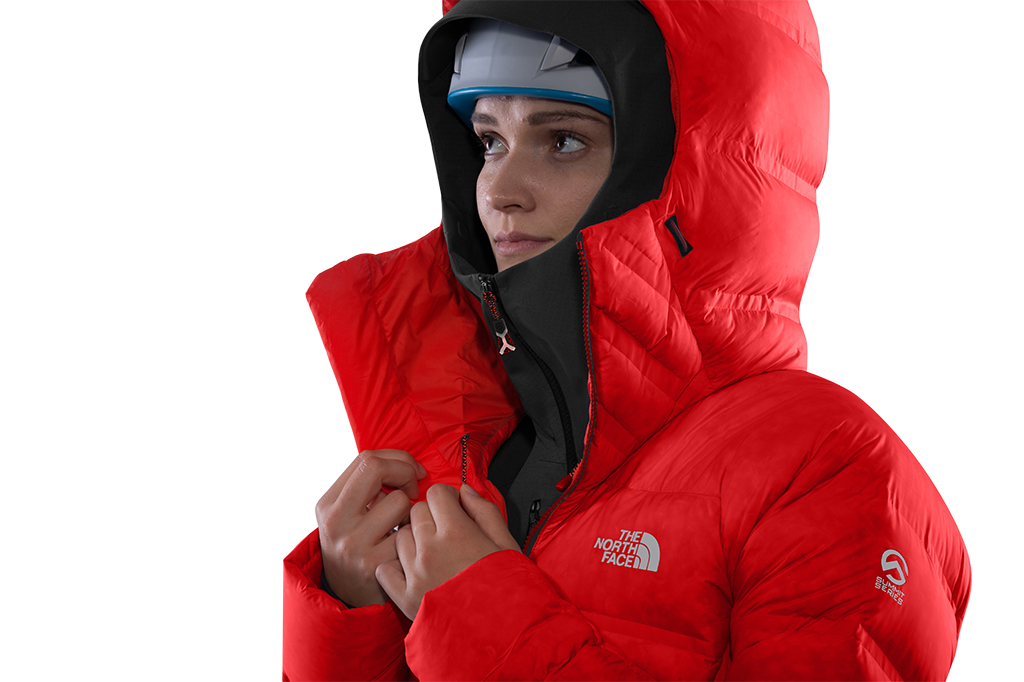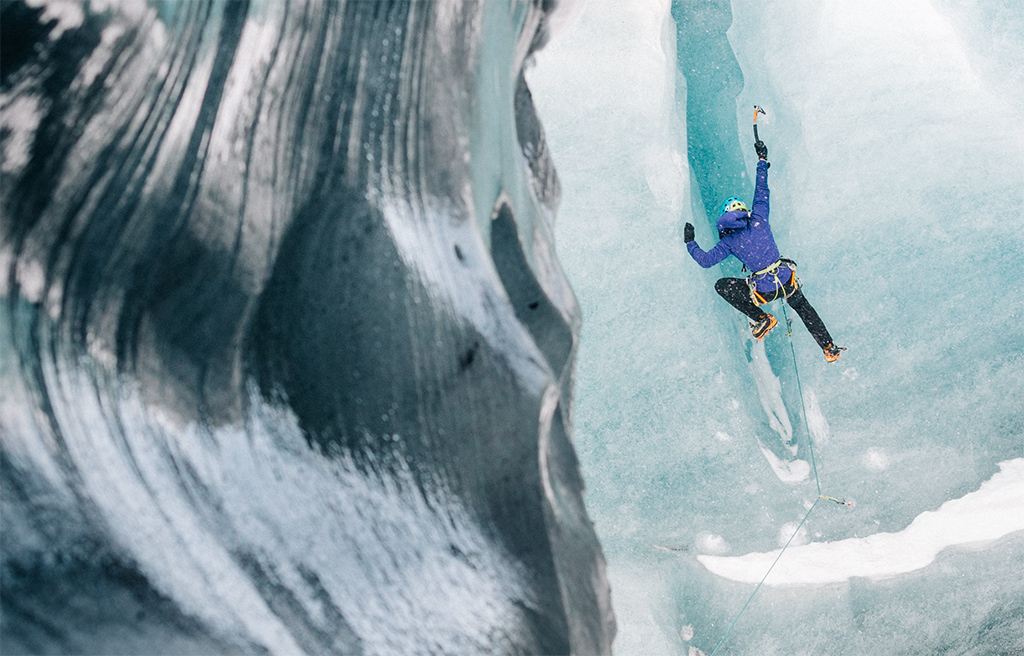For more than a decade, The North Face has designed its Summit Series, featuring apparel, packs, and tents, to be the technical pinnacle of the brand.
But like alpine climbers seeking to pare their kit to the essentials, the iconic outdoor gear maker has streamlined its Summit Series apparel offerings to better focus on the needs of mountain athletes and guides.
“Alpinism is minimalism,” renowned mountaineer and North Face athlete Conrad Anker said. “Every detail must be thought through, and it must serve a purpose. These same values are what we plan for in climbing, and they are what our Summit Series embodies.”

The North Face launched the Summit Series in 2000 but decided it needed refining after “it ended up being a very large offering of product that was being used to help segment the market as opposed to meet climbers needs,” as then-vice president for global product Joe Vernachio put it to Cool Hunting in 2015, when the company re-launched a radically streamlined Summit Series.
With a pared-down line, the company could put more effort and time into dialing in each individual piece of apparel for its function in ice climbing, alpinism and ski mountaineering, said Shelby Collins, a product line manager with The North Face. The series also contains gear aimed at those who want to go expedition climbing.
This year, the company has added versatile pieces such as the Summit L3 Ventrix Hoodie (women’s / men’s), which can function as outerwear on bluebird days or as a fleece midlayer when conditions worsen. Perhaps the most immediately visible change is brighter colors to enhance visibility and safety in the mountains.
But even with this year’s additions, “there is no excess in this line,” says Jennifer Radloff Davis, senior public relations coordinator with The North Face. “While the line expanded from (fall 2016) to include a larger variety of styles, we were still very deliberate about what styles we added and why.”
The series remains “the most technical expression of our brand” and a platform for the company to push the limits of innovation and technology, Collins said.

One of the innovation highlights Collins points to is the fall 2017 Summit L6 Down Belay Parka. This jacket features offset, engineered woven-chamber construction to eliminate cold spots and reduce stitching. Baffles, or dividers keeping insulation in place, are woven in at the material level instead of the traditional method of stitching separate layers together.
Prior to the 2015 re-launch, the Summit Series had expanded, in part, because of its appeal to people who weren’t necessarily into hardcore outdoor pursuits like ski mountaineering, ice climbing and alpinism, Collins said.
“People really saw our product as being inspirational because of it being rooted in the outdoors and mountaineering,” she said. Even though they might not be scaling Everest, people were drawn to the quality.
Still, Collins says the relaunched line can be seen as The North Face getting back to its roots of products that appeal to hard-core climbers. “Our roots are really what make us who we are,” she said.

The North Face’s goal of making the best-in-class product for mountain professionals and Anker’s input contributed to a re-focused Summit Series, she said. Anker worked with the design and development team to make sure each item was the absolute best for alpinism. “He had a huge hand in the re-launch,” she said.
“We examined the kit we use for climbing in the Himalaya, the Alps, Alaska and the Andes and realized that a simpler, more dialed set up is better,” Anker said. “Clarify the purpose; design for it, and commit to the end product.”
Anker, one of the most decorated climbers on the planet, compared the continuing refinement of the Summit Series to mountaineering itself. “Setting a standard that we aim to improve on each season is similar to how we approach our own goals in the mountains,” he said.
The company learns a lot in the process of getting new technology to market, and as it refines the technology and perhaps finds ways to make it cost less it can find its way into other North Face products, Collins said.

According to Collins, one of the innovations that began in concept with the Summit Series and the skiing and snowboarding-focused Steep Series is FuseForm technology. FuseForm garments use lighter, lower-density fibers in lower-wear areas and fibers that are thicker and more durable in high-wear zones. This reduces weight and creates a seamless transition between different areas of a garment.
It also means waterproof shell garments and fleece layers have enhanced durability in some spots and increased breathability or warmth, respectively, in others, Collins said.
In essence, the goal of all this behind-the-scenes work seems to be that the gear itself fades into the background.
“The crunch of snow underfoot, the whisper of wind and the joy of sunrise are the reasons we visit the outdoors,” Anker said. “Having comfortable gear allows for less distraction. The closer one is to the experience the more meaningful it is.”
